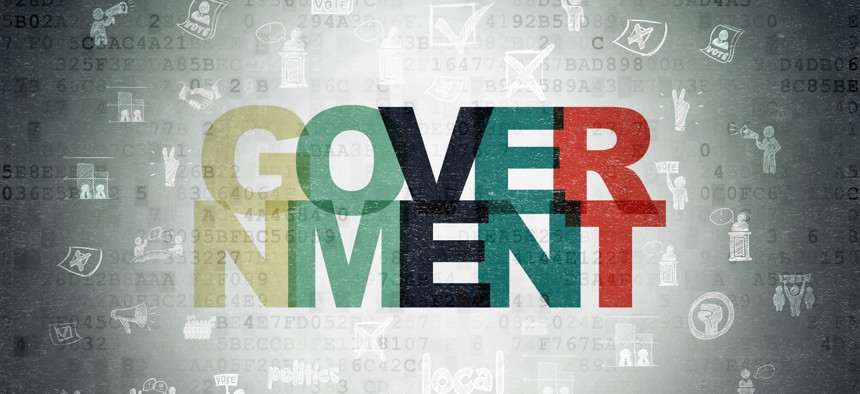What Digital Government CX Pros Should Know About the Connected Government Act

Maksim Kabakou/Shutterstock.com
Not everything comes to a standstill in D.C. during the holidays.
Just before Christmas, the Connected Government Act (known as H.R.2331 in the House and S.1769 in the Senate) passed both chambers of Congress and now heads to the president’s desk for signature. The Connected Government Act may be considered a win for improving the experience of citizens who need to access government information via mobile device. However, Congress still has a lot of work to do in clearing bigger hurdles that stand in the way of improving end-to-end digital citizen experiences.
What the Act Does
Once it is signed into law, the Connected Government Act will require new or updated federal websites intended for use by the public to be mobile friendly. A press release from the office of Sen. Maggie Hassan, D-N.H., who cosponsored the Senate version of the bill, notes one reason why it matters from the citizen perspective:
“The Connected Government Act will support low-income Americans who rely on mobile broadband at higher rates, as well as the 80 percent of Americans who experience disabilities who use wireless technology every day.”
Essentially, the act turns into law what the Office of Management and Budget previously issued to agencies as a policy guideline to make websites mobile friendly. Now, understandably, you may think that in today’s hyperconnected world that mobile-friendly websites are simply table stakes for any organization. But a 2017 report by the Information Technology and Innovation Foundation found that about 40 percent of federal government websites aren’t mobile friendly. The Connected Government Act ups the ante for federal agencies.
What the Act Doesn’t Do
The act doesn’t say that agencies now must drop everything and build mobile friendly websites. But, when they do create or redesign a website for the public, that website has to be mobile friendly “to the greatest extent practicable.” Similar language, “to the extent practicable” was part of the previous OMB policy guideline.
That language is pretty sticky. Moving forward, OMB, one of the two agencies tasked with overseeing the implementation of the act, has to clarify the way forward for agencies, and define “practicable.” Otherwise, agencies’ web teams may decide for themselves what is “practicable” and what is not, and that decision could vary widely based on the resources, talent available, or political landscape at their respective agencies.
Bigger "Citizen Experience" Fish to Fry?
Any congressional-level decision that improves citizens' experience with their government is a good thing. But the bigger hope for the passage of the Connected Government Act, from where I sit, is that it clears the way for the next step. Perhaps that next step is another, more far-reaching piece of legislation introduced earlier this year in the House by Rep. Garret Graves, R-La., and Rep. Joe Kennedy, D-Mass. The Creating Advanced Streamlined Electronic Services (CASES) for Constituents Act of 2017 (H.R. 3076) would address a bigger part of the end-to-end digital citizen experience.
Here’s how.
Think about this for a moment. Citizens’ experiences with government typically don’t end when they find information on government services on their mobile device or computer. After finding information, to actually receive or be considered to receive services (not just information about services), a citizen typically has to fill out a form or application of some sort. But as it stands today, those forms and applications, in many instances, are still confined to paper, sometimes due to the law—specifically The Privacy Act of 1974.
Here’s an example. Pretend you’re a citizen who has an issue with the Veterans Affairs Department, Social Security Administration, Federal Emergency Management Agency, Medicare or Medicaid that you’ve been unable to resolve on your own. Your issue has gotten to the point that you need your elected official to intervene with that agency on your behalf. You go to your computer or mobile device and find out through a government website that your elected official may indeed be able to help you.
That’s where your digital experience comes to halt and a cumbersome paper process begins. Because right now, by law, you have to physically print, sign and hand carry, e-mail scan, or mail a paper privacy release form to your elected official before they can engage that agency on your behalf. That means your full experience with the government can’t happen on your mobile device.
It’s that way—the paper way—because of the Privacy Act, which to be fair, came about well before technology became a truly viable way of serving citizens. But the CASES bill seeks to amend the law so that electronic authorizations would be allowable. The path would be clear for a digital tool or process that would help citizens engage their elected officials from the convenience of their smartphone or tablet.
Changing the law is hard work. And since forms and applications aren’t a particularly sexy legislative subject in today’s political theater, CASES may eventually go nowhere. But perhaps the passage of the Connected Government Act will bring on a bigger dialogue about what happens during the end-to-end citizen experience with government, and how Congress can help to clear the path for themselves, and for agencies, to make things better. That'd be pretty great.
Stephanie Thum, CCXP, is the former vice president of customer experience at the Export-Import Bank of the United States. She is currently the executive strategist for CX content for the Customer Experience Professionals Association. Follow her on Twitter: @stephaniethum.
NEXT STORY: Compliance Isn’t Security—But It Helps


